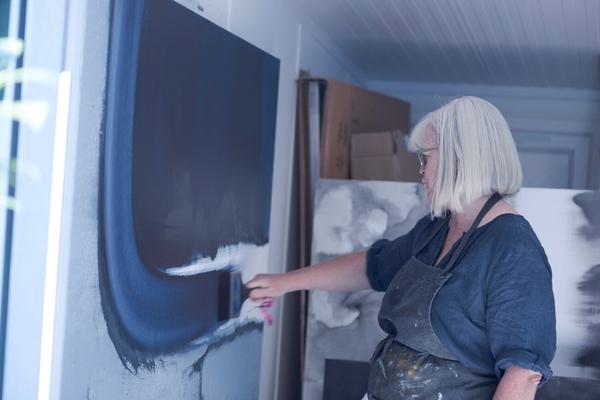Artist CV Sarah Needham
Recent Education
Royal College Of Art, London, MA Painting 2024-5
Recent Exhibitions
2025
MA Painting Graduate Show, Painting Building, Royal College of Art, London
Royal Academy Summer Exhibition Royal Academy of Art, London
Ancestral Utopias, Hangar Space Royal College of Art, London
Atemkristall, Blyth Arts Gallery, Imperial College, London
2024
Autumn Winter Show, Silson Contemporary, Harrogate
The Earth Beneath Her Feet, solo, Broadworks by Hive, Broad Street London, EC1
Matter of Threads, Paint Spaces Gallery, West Hampstead, London
The Other Art Fair, Los Angeles, USA
2023
Manchester Art Fair,
Through the Looking Glass, The Mall Galleries, London
The Other Art Fair Chicago USA
The Other Art Fair, London
Silson Contemporary Autumn/Winter, Harrogate
By Invitation Only, Thomas Spencer Fine Art, Bath
2022
Connect Art Fair with Thomas Spencer Fine Art , Mall Galleries, London
Colour in Abstraction, The Art Buyer Gallery, Thames Ditton
Silson Contemporary Autumn /Winter Show, Harrogate
The Decorative Antiques and Textiles Fair with Thomas Spencer Fine Art, London
2021
Winter Art and Antiques Fair, Olympia: Thomas Spencer Fine Art
Exhibition of work at Vintners Place,London curated by Eleni Polycarpou
Letters From a Strange Year Blue exhibition, online
The Other Art Fair, London
Bath Decorative Antiques Fair: Thomas Spencer Fine Art Bath
The Decorative Arts and Antiques Fair Thomas Spencer Fine Art,London
Summer Show at Silson Contemporary, Harrogate
The Other Side at Irving Contemporary,, Oxford,
The Affordable Art Fair with the Kahn Gallery, Battersea,
Letters From a Strange Year Pop up 1,London E2, 26-29 April.
1 Kings Hill curated by June Frickleton, Kings Hill
2020
Autumn Show, Silson Contemporary Art Gallery, Harrogate,
Water | Land, Irving Contemporary Art, Oxford
Artist Walks, 4a Sutton Road, N10 1HE,
Summer Show Gallery Artists. Silson Contemporary Harrogate
Unframed Highgate Contemporary Unframed online show
V-Art.Show Online open studios April/May /June editions 2020
Beyond Other Horizons: Contemporary paintings made in Britain and Romania, Iasi Palace of Culture, Iasi Romania
Mid winter show,., Silson Contemporary Art Gallery, Harrogate,
Competitions and Juried Shows
2025 Royal Academy Summer Exhibition
2023 Through A Looking Glasss, Swanfall, Mall Galleries
2019 Makers and Craftsmen, Curated by Bergman and Mar,
2018 The Black Swan Open selected by Johnny Messum, Messums Wiltshire, Michael Eaves Glastonbury Festival, Steve Burden Artist, Debbie Hilliyard Hauser and Wirth, Sue Conrad Artist
2018 Long listed for the Secret Art Prize selected by gallerist Eleni Duke
2017 Creekside Open- selected by Jordan Baseman
Publications
Connecting Across Place and Time, Interview with Mia Funk, The Creative Process Podcast, https://www.creativeprocess.info/arts-interviews2/sarah-needham 2025
The London Magazine, Cover Image June/July 2024
John Paul Pryor, Secrets and Lies: The Artist Sarah Needham on abstracting hidden histories into profound emotional encounters, Culture Collective Journal, 31.1.23 https://housecollective.com/journal/secrets-and-lies-sarah-needham
A Geography of Colour podcast interview with Ruth Philo, hosted on ContemporaryBritishPainting.com available via
https//soundcloud.com/ruth-277228686/sarah-needham. 2023
Beyond Other Horizons,2020 Iasi Palace of Culture exhibition catalogue also available online www.academia.edu/4662045/Beyond_Other_Horizons
Artist Walk 2020 a Londres: quand les artistes s’exposent a leaur fenetres, Lea Malgouyres, Telerama https://www.telerama.fr/idees/artists-walk-2020-a-londres-quand-les-artistes-sexposent-a-leurs-fenetres-6764934.php
Artist Talks/ Interactive Events / Community Arts
2025 Central St Martins School of Art, Artist talk and tutorials 2025
2025 Ancestral Utopias pigment and medium making workshop: Making pigments and paint from Thames River debris RCA
2025 Pigment walk and making at Toast Hampstead
2024 Earth pigment processing as part of The Earth Beneath Her Feet, Broadworks by Hive
2023 The Earth Beneath Her Feet, Artist Talk, Oxford
2023 Residency Talk Pasture Project Space Residency Autumn
2020Letters From a Strange Year 2021: Symposium and interactive online event
2019 Willoughby Gallery Project Oral history collecting, local research, children’s workshop, interactive gallery
2018 Live PaintingTower 42 London,
2017 In conversation with Rosalind Davis: Rosalind Davis interview at Trace Elements
2016 Both Ends of Madness Symposium, Plastic Propaganda, Artist Talk Sassoon Gallery Folkestone
Residency
Pasture Project Space, Suffolk, Feb 2024

